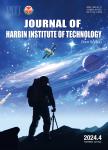Lifeline system network reliability calculation based on GIS and FTA
Lifeline system network reliability calculation based on GIS and FTA作者机构:School of Civil Engineering Harbin Institute of Technology
出 版 物:《Journal of Harbin Institute of Technology(New Series)》 (哈尔滨工业大学学报(英文版))
年 卷 期:2006年第13卷第4期
页 面:398-403页
核心收录:
学科分类:081401[工学-岩土工程] 08[工学] 0814[工学-土木工程]
基 金:Sponsored by the Natural Science Foundation of China (Grant No.50278028) the Scientific Research Foundation of Harbin Institute of Technology(Grant No.HIT200079)
主 题:network reliability( NR) lifeline earthquake engineering( LEE) fault tree analysis(FTA) geographic information system(GIS)
摘 要:Lifelines, such as pipeline, transportation, communication, electric transmission and medical rescue systems, are complicated networks that always distribute spatially over large geological and geographic units. The quantification of their reliability under an earthquake occurrence should be highly regarded, because the performance of these systems during a destructive earthquake is vital in order to estimate direct and indirect economic losses from lifeline failures, and is also related to laying out a rescue plan. The research in this paper aims to develop a new earthquake reliability calculation methodology for lifeline systems. The methodology of the network reliability for lifeline systems is based on fault tree analysis (FTA) and geological information system (GIS). The interactions existing in a lifeline system ale considered herein. The lifeline systems are idealized as equivalent networks, consisting of nodes and links, and are described by network analysis in GIS. Firstly, the node is divided into two types: simple node and complicated node, where the reliability of the complicated node is calculated by FTA and interaction is regarded as one factor to affect performance of the nodes. The reliability of simple node and link is evaluated by code. Then, the reliability of the entilre network is assessed based on GIS and FTA. Lastly, an illustration is given to show the methodology.



